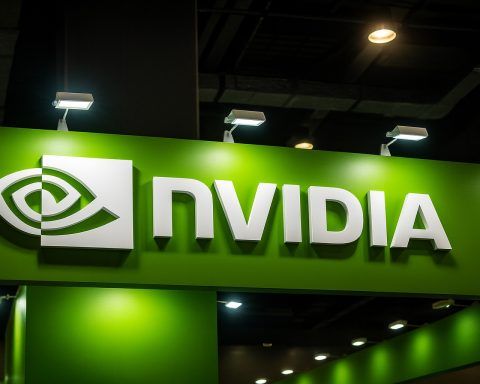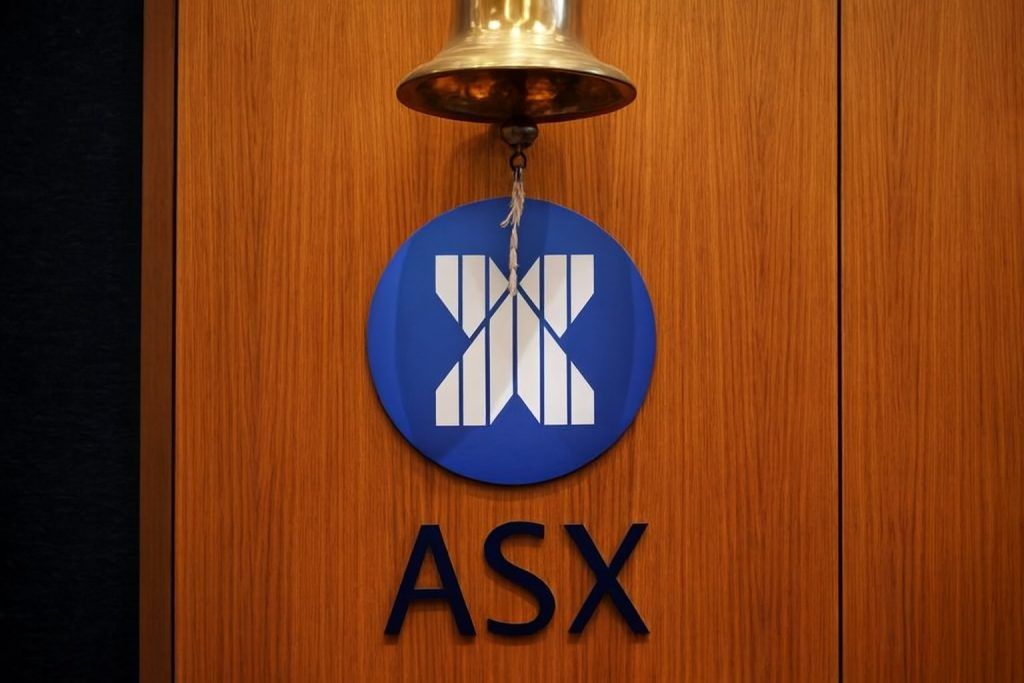As Tokyo investors get ready for Thursday’s (20 November 2025) cash session, the backdrop is one of rising bond yields, a softening Nikkei, a sliding yen, and geopolitical stress with China — all layered on top of tonight’s Nvidia earnings in the U.S.
Below is a structured briefing on what you should know before the Japan stock market opens.
Key Points at a Glance
- Nikkei under pressure: The Nikkei 225 fell 0.34% on Wednesday to 48,537.70, its fourth straight decline and the longest losing streak in seven weeks. The broader Topix slipped around 0.2% to about 3,245.6, with semiconductor and tech names again underperforming. [1]
- Volatility elevated: The Nikkei’s own volatility gauge is holding in the mid‑30s after jumping more than 20% recently, underscoring heightened uncertainty around AI-related tech and bonds. [2]
- JGB yields at multi‑decade highs: Japan’s 10‑year government bond yield closed near 1.77%, the highest since 2008, while the 40‑year yield has pushed above 3.7%, a record, as markets brace for a huge extra budget and more debt issuance. [3]
- Yen weak, intervention chatter louder: The dollar is trading around ¥156–157, with USD/JPY touching ten‑month highs and sitting in the “top half of 155” that analysts say policymakers are watching closely for intervention risk. [4]
- Wall Street rebounds into Nvidia earnings: U.S. stocks rose overnight, with the S&P 500 up about 0.7% and the Nasdaq more than 1% ahead of Nvidia’s results — a key global sentiment driver for AI and chip names that will hit before Tokyo’s open. [5]
- Fiscal policy front and center: A ruling‑party panel has proposed an extra budget exceeding ¥25 trillion (about $161 billion) for Prime Minister Sanae Takaichi’s stimulus package, reinforcing expectations of heavy bond issuance and feeding the JGB sell‑off. [6]
- BoJ seen staying put into 2026: A member of the prime minister’s growth strategy panel, former BoJ board member Goushi Kataoka, said the central bank is unlikely to raise its 0.5% policy rate before March 2026, arguing authorities must first see fiscal stimulus lifting demand. [7]
- China–Japan tensions weigh on tourism and retailers: Beijing has suspended Japanese seafood imports and more than 543,000 flight tickets from China to Japan have reportedly been canceled since Saturday, threatening inbound tourism and consumption-sensitive stocks. [8]
- AI and telecom storylines: SoftBank remains tightly linked to the global AI boom — a Breakingviews analysis estimates its stake implies OpenAI is being valued around $750 billion — while the group is also showcasing 6G trials in Tokyo’s Ginza district. [9]
- Key data ahead: Japan’s National CPI (YoY) for October is scheduled for Thursday evening, with consensus looking for core inflation to hold around 2.9%, above the BoJ’s 2% target. The release is after the Tokyo close but could reshape expectations for the December 19 BoJ meeting. [10]
1. How Tokyo Traded on November 19
Equity performance
- The Nikkei 225 swung between gains and losses before closing down 0.34% at 48,537.70, extending its losing streak to a fourth session and pulling further back from the 50,000 mark hit earlier this month. [11]
- The Topix slipped about 0.17% to roughly 3,245.6, with breadth weak and cyclicals under mild pressure. [12]
Winners and losers
- Retail‑focused Aeon jumped around 4.6%, while cinema operator Toho gained nearly 4%, standing out as defensive and domestic‑demand plays. [13]
- On the downside, wafer maker SUMCO fell more than 6%, and other chip‑related names like Ibiden and printing/tech groups such as Toppan Printing and Konica Minolta lost over 3%, underscoring pressure on the semiconductor complex. [14]
Drivers
- Reuters reported that investors remained wary about stretched valuations in technology and AI‑linked shares, both in Japan and the U.S., ahead of Nvidia’s earnings. Rising domestic bond yields and diplomatic tensions with China were also cited as key drags. [15]
- An IG note highlighted that the Japan 225 index has fallen about 8% from its early‑November peak and briefly slipped below 50,000, with travel and retail stocks hit especially hard by China’s travel warning and broader de‑risking. [16]
Going into Thursday’s open, positioning looks cautious: the market has already de‑rated from recent highs, but volatility remains elevated and sellers are still targeting high‑beta names.
2. Bond Rout and Fiscal Fears: Why JGB Yields Matter for Stocks
Japan’s sovereign bond market has suddenly become a central driver of equity sentiment.
- The 10‑year JGB yield closed near 1.77% on Wednesday — up roughly 15 basis points in a month and the highest level since 2008. [17]
- According to coverage collated from WSJ and economic commentary, the 40‑year yield has surged to a record around 3.7%, while five‑year yields are at levels last seen in 2008. [18]
The main catalyst is fiscal:
- A ruling‑party panel of LDP lawmakers close to Prime Minister Sanae Takaichi is pushing for a supplementary budget of more than ¥25 trillion to finance a large stimulus package, explicitly saying the government “should not hesitate to issue more bonds.” [19]
- This would be nearly double last year’s extra budget of ¥13.9 trillion, raising concerns that long‑dated issuance will climb sharply and that Japan’s already‑elevated debt‑to‑GDP ratio will keep rising. [20]
Why equities care
- Banks and insurers: Higher long‑term yields can support net interest margins and investment returns, but rapid moves and concerns about unrealised losses on large bond portfolios can also weigh on financials.
- Growth vs value: Higher discount rates typically compress valuations for long‑duration growth stocks — such as richly priced tech and AI plays — while benefiting value and cyclical names if growth holds up.
- BoJ reaction risk: With the 10‑year approaching 1.8%, some investors fear the BoJ may be forced to tweak its stance or ramp up JGB buying again, injecting fresh uncertainty into both bond and equity markets. [21]
For Thursday’s open, traders will be watching whether JGB yields stabilize near current levels or continue to grind higher in early Tokyo trading. A fresh spike could keep pressure on domestic financials and high‑valuation growth stocks.
3. Yen Weakness and Intervention Watch
FX is another key piece of the puzzle.
- The dollar strengthened to around ¥156.6 on Wednesday, leaving the yen at a ten‑month low against the greenback. [22]
- Historical data show USD/JPY closing near 156–157, up almost 1% on the day and marking a steady climb from the low‑150s earlier this month. [23]
- Several FX strategists highlight that the pair is pushing into the “top half of 155” — a zone widely viewed as sensitive for Japanese policymakers and potential FX intervention. [24]
What it means for equities
- Exporters and global names (autos, machinery, precision equipment) typically benefit from a weaker yen, which boosts yen‑translated overseas earnings. Look for continued focus on automakers and major manufacturers at the open.
- Domestic sectors (retail, utilities, airlines) face rising import costs, especially in energy and food, which can squeeze margins if they can’t fully pass prices on.
- The weak yen also fuels inflation via imported goods, helping keep CPI near 3% and complicating the BoJ’s task just as fiscal stimulus ramps up. [25]
However, because yen weakness is now seen as driven by Japan’s fiscal stance and the Fed–BoJ policy gap, rather than by growth optimism, equity markets may treat further depreciation as a double‑edged sword: good for exporters, but a warning signal on macro risk and potential future intervention.
4. BoJ, Government and the Policy Balancing Act
Monetary and fiscal policy are increasingly intertwined:
- In a recent interview, Goushi Kataoka, a member of Prime Minister Takaichi’s growth strategy panel and former BoJ board member, said he does not expect the BoJ to raise its benchmark rate before March 2026. He argued that authorities must first see whether large‑scale extra spending — on the order of ¥20 trillion or more — actually boosts domestic demand. [26]
- A Reuters report noted that BoJ Governor Kazuo Ueda told the prime minister the central bank is seeking a “smooth landing” toward its inflation goal — i.e., normalising policy without choking off growth — but has so far kept the policy rate at 0.5%. [27]
- Bloomberg has also reported that Ueda is scheduled to meet Finance Minister Satsuki Katayama and Economic Revitalisation Minister Minoru Kiuchi, underlining the coordination pressure the BoJ faces as bond yields spike and fiscal plans expand. [28]
Takeaway for Thursday
There is no BoJ policy meeting on the calendar for November 20 — the next rate decision is due on December 19 — but any fresh comments from these policymakers overnight or early in the Tokyo morning could quickly move both the yen and rate‑sensitive sectors (banks, REITs, high‑dividend defensives). [29]
5. Geopolitics: China–Japan Tensions and Tourism Pain
Geopolitical risk is no longer a distant headline — it’s directly affecting Japan‑exposed stocks.
What happened
- After Prime Minister Sanae Takaichi suggested earlier this month that Japan might intervene militarily if China attacked Taiwan, Beijing reacted with a flurry of economic and political measures. [30]
- According to reporting from Washington, China has:
- Suspended imports of Japanese seafood
- Issued travel warnings for Chinese citizens in Japan
- Allowed airlines to offer free cancellations, leading to more than 543,000 flight tickets being canceled since Saturday — roughly 40% of booked seats on China–Japan routes
- Paused the release of some Japanese films in Chinese cinemas [31]
- Analysts cited by IG and Japanese media warn that a prolonged slump in Chinese visitors — who account for over a quarter of foreign arrivals and are the biggest spenders per trip — could shave around 0.3 percentage points off Japan’s GDP in a year. [32]
Market impact so far
- IG’s analysis notes that the Japan 225 index has dropped around 3% in the first two sessions of this week, with tourism and retail‑oriented equities falling sharply. Shiseido, Isetan Mitsukoshi, and Muji’s parent Ryohin Keikaku saw double‑digit percentage declines earlier this week. [33]
For Thursday’s open, watch:
- Airlines, travel agencies, hotels and department stores — the sectors most directly hit by Chinese tourism flows.
- Food exporters and fisheries, given the seafood import ban.
- Any new statements from Tokyo or Beijing that could either de‑escalate or further inflame tensions.
6. Macro Backdrop: An Economy Just Contracted
The geopolitical and fiscal jitters are hitting an economy that has already slowed:
- Official figures show Japan’s Q3 2025 GDP shrank at an annualised rate of about 1.8%, the first contraction in six quarters and a reversal from +2.3% in Q2. Weak exports and softer consumption offset modest gains in capital expenditure. [34]
- Headline CPI for September was running at about 2.9% year‑on‑year, up from 2.7% in August and comfortably above the BoJ’s 2% target, driven by food and energy but also stickier services prices. [35]
Key event to note
- The October National CPI (YoY) is scheduled for release on Thursday, November 20 at 18:30 (local release time shown on global calendars). Consensus expects inflation to remain around 2.9%, unchanged from September. [36]
Although this data hits after the cash session, it will influence expectations for the December BoJ meeting and could move futures, FX and rates later in the day — feeding back into risk sentiment at the next Tokyo open.
7. Global Cues: Wall Street, Nvidia and U.S. Yields
Tokyo is opening into a global market that has just staged a tentative rebound.
- In New York, all three major U.S. indices were higher on Wednesday:
- Dow Jones: roughly flat to slightly positive
- S&P 500: up about 0.7%
- Nasdaq Composite: up around 1.2%, led by big tech. [37]
- The move came as investors positioned for Nvidia’s earnings after the close and for delayed U.S. jobs data due Thursday, following the now‑ended government shutdown. Nvidia’s results are seen as a litmus test of whether the AI boom can justify current valuations. [38]
- U.S. Treasury yields edged higher, with the 10‑year around 4.13%, reflecting cautious optimism but no major reset in the rates outlook. [39]
Why this matters for Japan
- Nvidia’s numbers will drop before Tokyo’s Thursday open (given the time zone gap), meaning futures and ADRs could already be reacting by the time cash trading starts.
- A strong Nvidia print and constructive guidance would likely support Japanese chip and AI‑linked names(Tokyo Electron, Advantest, semiconductor materials, cloud and data‑center plays).
- A disappointment could reinforce concerns about an “AI bubble”, adding pressure to the very tech names that have already led the Nikkei lower this week. [40]
8. Corporate Storylines to Watch
SoftBank Group (9984)
- A Reuters Breakingviews analysis estimates that if you back out SoftBank’s other holdings and apply a standard holding‑company discount, the group’s 11% stake in OpenAI implies the AI company is being valued at roughly $750–756 billion, well above its most recent private valuation around $500 billion. [41]
- SoftBank has invested about $10.8 billion so far, with a pledge to commit another $22.5 billion, making it one of the world’s largest single‑name bets on a private AI company. [42]
- At the same time, SoftBank announced successful tests of 7GHz spectrum in Tokyo’s Ginza district for future 6Gnetworks, highlighting its ambition to sit at the core of the AI‑plus‑connectivity ecosystem. [43]
Trading angle: SoftBank increasingly trades as a proxy for global AI sentiment. Any big move in Nvidia, OpenAI‑adjacent news, or shifts in the AI narrative could make the stock one of the most volatile large‑caps at the open.
Toyota Motor (7203)
- Analysis from equity research platforms notes that Toyota has begun production at its first U.S. battery plant in Liberty, North Carolina — a roughly $14 billion facility expected to produce around 30 GWh of batteries annually and create up to 5,100 jobs. It’s framed as Toyota’s largest investment outside Japan and a cornerstone of its global electrification strategy. [44]
Trading angle:
- This supports the long‑term EV and hybrid narrative around Toyota and its domestic supply chain (battery materials, equipment, and components).
- In the near term, auto stocks in Tokyo also remain leveraged to yen weakness and U.S. demand; Thursday’s open may see continued interest in autos as a relative safe haven within cyclicals.
Sony Group (6758)
- Earlier this month, Sony raised its annual profit forecast by 8%, helped by stronger anime and content businesses, and announced a buyback of up to 35 million shares worth about ¥100 billion. The stock rose more than 5% on the news. [45]
- Sony continues to be seen as a hybrid play on gaming, music, imaging sensors, and content, with chip demand and tariff impacts being key watch points.
Trading angle:
- In a market skittish about high‑multiple pure‑play AI names, Sony’s diversified earnings base and buyback support could attract buyers on dips — especially if Nvidia’s print is solid.
9. Thursday’s Calendar: What Could Move Markets
For November 20, 2025 (Thursday), here are the main items that matter for Japan:
Japan
- National CPI (YoY) – October (18:30 local release time)
- Previous: 2.9%
- Consensus: 2.9%
- Importance: High for BoJ expectations and yen sentiment, though the timing means the immediate impact will be felt in futures, FX and the next day’s cash open rather than during Thursday’s session itself. [46]
- No major domestic data is scheduled during normal Tokyo cash hours, according to real‑time economic calendars, implying that intraday moves will likely be driven more by global leads, bonds and yen than by fresh local releases. [47]
- Market status: The Tokyo Stock Exchange is open as normal on November 20; the next holiday is Monday, November 24, when trading is closed for the observance of Labor Thanksgiving Day. [48]
Global
- Nvidia earnings (US) – after U.S. close on Wednesday (Thursday morning Tokyo time).
- Delayed U.S. September employment report – due Thursday, with potential to sway Fed expectations and U.S. yields. [49]
- Fed October meeting minutes – also in focus for any hints on the pace and scale of 2026 rate cuts. [50]
These global events will shape overnight futures and FX, influencing how Japanese investors position beyond Thursday’s cash session.
10. How to Think About Thursday’s Open
Putting it all together, here’s how the setup looks going into the November 20 open:
- Short‑term mood:
- Cautious but not panicked. The Nikkei has already corrected from recent highs, and global equities just bounced, but bond yields and geopolitics are keeping risk appetite in check.
- Bullish triggers to watch:
- Nvidia beats and raises guidance, reigniting confidence in the AI earnings story.
- JGB yields stabilise or pull back, easing pressure on financial conditions.
- Any sign of de‑escalation in China–Japan tensions (e.g., softer rhetoric, hints at normalising tourism).
- Bearish triggers to watch:
- Nvidia disappoints on revenue or guidance, sparking a broader de‑rating of AI and semiconductor names.
- JGB yields push even higher, reviving fears that Japan’s bond market is “breaking” and forcing the BoJ into an awkward defensive stance. [51]
- Further Chinese economic retaliation against Japan or more hawkish comments from Takaichi.
- Sectors likely in focus at the open:
- Tech & semiconductors: hyper‑sensitive to Nvidia and U.S. tech.
- Financials: trading as leveraged bets on the JGB curve and BoJ reaction.
- Tourism/retail: directly exposed to China flows and domestic demand.
- Autos & exporters: beneficiaries of yen weakness, but not immune if global risk sentiment sours.
- Risk management considerations:
- Elevated volatility and cross‑asset linkages (bonds, FX, geopolitics, AI) argue for position sizing disciplineand careful attention to overnight headlines.
- Correlations are high: the same news (e.g., Nvidia’s guidance or a fresh China move) may hit multiple asset classes simultaneously.
Disclaimer: This article is for information and news purposes only and does not constitute investment advice or a recommendation to buy or sell any security, currency, or other financial instrument. Always conduct your own research and consider your risk tolerance before making trading or investment decisions.
References
1. indexes.nikkei.co.jp, 2. indexes.nikkei.co.jp, 3. www.investing.com, 4. www.reuters.com, 5. www.reuters.com, 6. www.reuters.com, 7. www.japantimes.co.jp, 8. www.washingtonpost.com, 9. www.reuters.com, 10. www.investing.com, 11. indexes.nikkei.co.jp, 12. www.bloomberg.com, 13. m.investing.com, 14. m.investing.com, 15. m.economictimes.com, 16. www.ig.com, 17. www.investing.com, 18. m.economictimes.com, 19. www.reuters.com, 20. www.reuters.com, 21. m.economictimes.com, 22. www.reuters.com, 23. www.investing.com, 24. blackbull.com, 25. tradingeconomics.com, 26. www.japantimes.co.jp, 27. www.reuters.com, 28. www.bloomberg.com, 29. www.investing.com, 30. www.washingtonpost.com, 31. www.washingtonpost.com, 32. www.ig.com, 33. www.ig.com, 34. www.reuters.com, 35. tradingeconomics.com, 36. www.investing.com, 37. www.reuters.com, 38. www.reuters.com, 39. www.reuters.com, 40. www.reuters.com, 41. www.reuters.com, 42. www.reuters.com, 43. www.softbank.jp, 44. simplywall.st, 45. www.reuters.com, 46. www.investing.com, 47. tradingeconomics.com, 48. www.tradinghours.com, 49. www.reuters.com, 50. www.reuters.com, 51. m.economictimes.com







